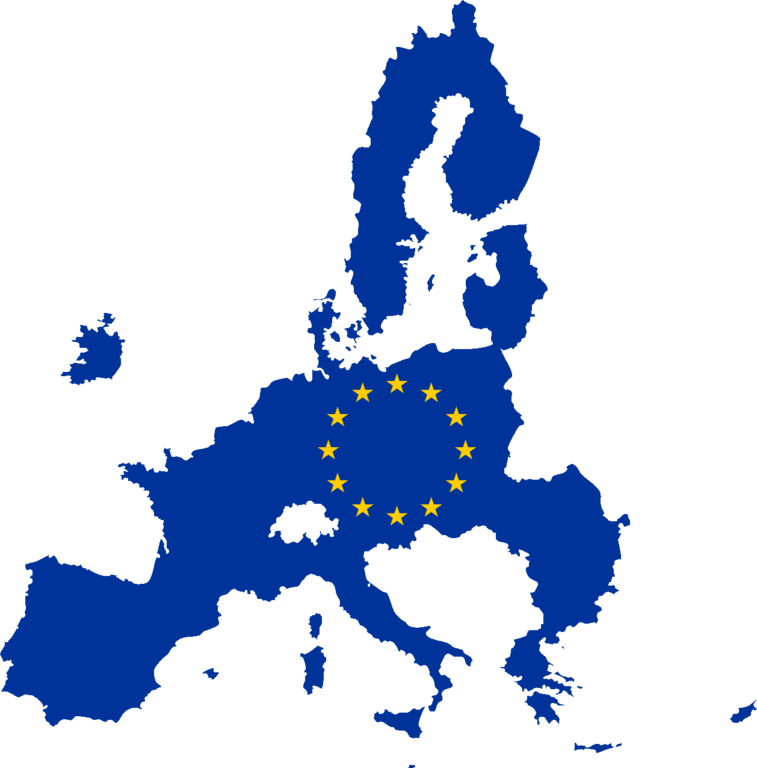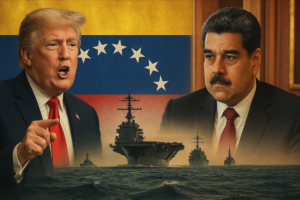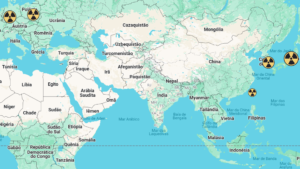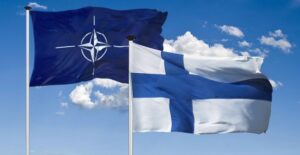- Several European countries are increasing investment in military equipment due to the war in Ukraine.
- The Joint Procurement Task Force was proposed by the European Commission, with a view to further integrating the region’s defense industry.
- The integration of the regional arms industry could lead the European bloc to a lesser dependency on the importation of high technology weapons from the US and greater geopolitical autonomy.
Since Russia’s invasion of Ukraine, many European Union (EU) countries have increased their military budgets, aiming at the security and defense of their territories.
However, the lack of military and war industry integration among European countries made it difficult even for help – in the form of military equipment – sent to Ukraine’s defense by member countries of the North Atlantic Treaty Organization (NATO).
In this way, the European Commission proposes that the EU Member States act more jointly in the area of arms production, defense and security in the bloc, to improve the effectiveness of spending and manage needs in a unified manner.

What is the “Defence Joint Procurement Task Force” or Joint Defense/Weapons Procurement Task Force?
The Joint Procurement Task Force was proposed by the European Commission on May 18, 2022 and was established immediately. The objective is to help the countries of the European Union to coordinate their needs for the acquisition of weapons in the short and long term, in order to avoid competition between different arms suppliers within the bloc, thus avoiding higher acquisition costs and shortages of supplies in the context of the war in Ukraine.
Forms of support can range from centralizing information, providing methodological support, or managing purchases of large weapons systems. The European Defense Agency (EDA), which is also invited to participate in the Working Group’s meetings, will be involved and may facilitate short-term joint acquisitions of weapons systems.
The Task Force will be made up of national officials from each country and chaired by the rotating Presidency of the Council of the EU, which currently sits under the Czech Republic.
The Force must act provisionally, despite Thierry Breton – current Commissioner for the Internal Market of the European Union and formulator of the proposal, together with Josep Borrell, High Representative of the Union for Foreign Affairs and Security Policy – pressing for permanent actions.
How did the War in Ukraine accelerate the integration of the Arms Industry in the European Union?
The war on Ukrainian territory was a watershed moment for European security, confirming that Putin’s Russia has expansionist ambitions that extend across much of eastern Europe.
In addition, the conflict highlighted other threats to Euro-Atlantic security, and gaps in the European Union’s defense sector in the medium and long term. Some of these gaps are the areas of air domain, land domain, maritime domain and cyber defense.
Furthermore, regional and energy insecurity and the Chinese economic and military threat also represent significant problems for the EU and NATO, which created its New Strategic Concept.
In the context of the acquisition and supply of large weapons systems, Europe ended up with a arms industry scattered among different national suppliers of the many different members of the bloc. Due to this fragmentation and inefficiency in producing tanks, fighters or other weapons systems of comparable quality to the American ones, many of the members of the European Union ended up depending on weapons exported by Washington, not Brussels.
Therefore, the billions of euros spent on military aid to Ukraine in the year 2022, highlighted the need for investment and modernization of European military forces, especially in the sectors of connectivity, surveillance and protection, and military mobilization.
The need to help Kiev with military equipment is being a strong incentive for better coordination of defense investment at the European level, considering that when Putin attacked Zelensky in February 2022, spending on military equipment increased at the national level in EU member countries.
As a consequence, these purchases showed how important further integration of the European defense industry is. And in addition to the military spending already mentioned, one can already foresee the future spending that is promised to Kiev for 2023.
What benefits, efficiencies, and streamlining of processes can greater integration of the European arms industry bring?
The European Commission’s proposal for EU member states to jointly increase their defense investments could strengthen ties between these countries.
Just as the bloc came together to buy vaccines during the COVID-19 pandemic, and just as the EU intends to act on the purchase for natural gas, the Commission set out to improve the effectiveness of defense spending and to manage each country’s procurement needs in the short term.
Furthermore, Russian and Chinese defense budgets have skyrocketed over the past decade, leaving the EU vulnerable and its military capabilities lagging behind. So this will be the ideal opportunity if the bloc wants to be respected as both a strong military rival and a major international arms supplier.
In the short term, the commission wants to replenish weapons stocks while replacing Soviet-era equipment and bolstering air and missile defense systems.
Then bolster drone and armored vehicle reserves while increasing space and cyber defense capabilities. Finally, member states’ maritime forces will also be strengthened.
How much better if this stock replenishment and new acquisitions are made by great “champions” of the European defense industry and not foreign companies.
What are the obstacles to greater EU military integration?
One of the biggest obstacles to be overcome is the fragmentation of both the military and the European defense industry. The war in Ukraine highlights how the lack of fully standardized equipment can be a problem for Western forces in a conflict, even though European NATO countries already have a great degree of standardization when it comes to caliber of ammunition and interoperability of communications systems.
The EU needs to leverage its funding to subsidize and thus encourage its members to adopt standardization and interoperability in the production, supply and procurement of major weapons systems for their Armed Forces.
This greater integration of the national arms industries of the member states of the union will bring efficiency in the research, development and production of weapons, which leads to the ability to produce cutting-edge weapons with greater technology and that are more attractive to the member states of the EU and to potential importers. of weapons around the world.
This greater efficiency and greater international attractiveness will lead to economies of scale in production, which lead to economic advantages in themselves. This is not happening at the moment due to the great fragmentation in the production and supply of the same type of weapon system, such as tanks, fighter jets and artillery systems, for example.
The following list demonstrates some of the different types of weapons within the same bloc, the European Union, that compete with each other for buyers and operators:
Tank (Main Battle Tank) – there are 8 different models, 6 of them produced in Europe;
Infantry Fighting Vehicles – there are 11 different models, all produced in Europe;
Self-Propelled Howitzers – there are 7 different models, 5 of them produced in Europe;
Fighter Aircraft – there are 10 different models, 8 of them produced in Europe;
Destroyers and Frigates – there are 26 different models, all produced in Europe;
Thus, the need for the European bloc to further standardize the production and acquisition of its military equipment is evident, so that there is greater efficiency and gains of scale in the European arms industry.
Why is a more integrated European defense industry important and strengthens Europe’s geopolitical power in the world?
The integration of the European defense industry could result in positive points for the Union. With the joint investment in defense, the future tendency is for the bloc to strengthen in several aspects.
The first and most obvious point is that Europe will no longer have a fragmented and inefficient defense industry, but will have a more integrated defense industry with greater gains in scale. This will increase the quality and value of the weapons produced, leaving the EU less dependent on arms exporters outside the bloc.
This further development and integration of the EU armaments industry could make the Union a world arms industry champion. As we have already written about the weakening of Russia’s defense industry due to the war in Ukraine, having a strong defense industry guarantees partnerships and alliances around the world since the export of arms creates dependencies between the operator and the supplier. In the case of the EU, this would increase its soft power around the world.
Another point is the possibility of a better overview of defense at the EU level, as well as its expenses, the identification of gaps, collaboration and regional integration, reducing mistrust between allies and increasing transparency.
The integration of the European arms industry is part of a greater integration of the EU armed forces itself. One of the most obvious consequences of these two processes is greater security in the region, as the bloc will be able to respond to conflicts and external crises with greater speed and efficiency, develops the military capacity of the allies and, consequently, protect the EU and its citizens.
Ultimately, these two processes will result in Europe becoming less dependent on NATO and the United States both for defense and for the supply of high-tech defense systems. This reflects positively on the region, as it will result in greater military and strategic autonomy, which leads to a strengthening of the geopolitical power of the European Union as it will be a greater military power and arms supplies.












[…] wars have existed and war equipment has started to be built, military strategies have evolved to accompany such […]
[…] abroad have some level of power projection, however, this term is most often used when referring to military forces with a worldwide […]
[…] diversity of models highlights the need for greater military integration in Europe to reduce internal competition for buyers and operators, as well as to promote a more efficient and […]
[…] Baltic is a railway project for greater European integration and regional cooperation, with benefits that go beyond mobility and the improvement of local […]